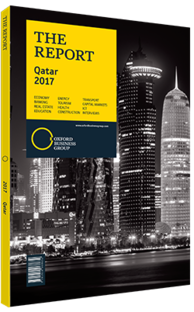Financial technology changing Qatar's banking landscape
Qatar was quick to embrace the financial technology (fintech) revolution, having long recognised that digital technologies can raise both competitiveness and security. The push to digitise has been given an added boost by the blockade, as it has driven all sectors of the economy to invest in safer and more advanced fintech systems. Banks have been supportive of national fintech initiatives – such as the Smart Qatar Programme, or TASMU – and have also invested heavily in the digital transformations of their own processes, from back-office services to customer interface. Up-and-coming fintech companies have seen substantial growth over this period. A notable example is the Qatari e-payment systems provider QPAY, which reported 300% year-onyear growth from its 2014 launch to November 2017.
Equally, the fintech revolution has the potential to disrupt the sector, with new digital solutions challenging conventional banking structures and ways of doing business. Adapting to and benefitting from these changes will require flexibility and a pragmatic attitude towards cooperation, not only among commercial and investment banks, but also central bankers, customers and fintech companies themselves.
Expansion
Digitisation offers a range of advantages for the consumer, such as faster transaction times, greater convenience and better access to services. For banks, offering online services and digital transactions increases speed and efficiency, while also lowering operational costs. Such measures reduce the need for physical branches and allow many procedures to be simplified, if not eliminated altogether.
Many of these changes could be implemented rapidly in Qatar because there is already a high level of internet penetration in the country, with 2.2m internet accounts registered as of June 2017 out of a total population of 2.5m. Moreover, a recent report from Hootsuite, a Canadian social media management software company, shows that Qatar and the UAE share the title of the highest rate of social media penetration in the world, at 99%. Qatar is also ranked first for the proportion of the population accessing social media from a mobile device, with 95% of citizens doing so.
New fintech is increasingly utilised offline too. Contactless debit cards are available from the Commercial Bank of Qatar (QCB) and Qatar National Bank, which can be used at near field communication terminals at many of the country’s retail outlets. Ahilbank launched Qatar’s first contactless credit card in March 2016.
Customer Reach
New digital services for those looking to bank outside Qatar are being developed. The QCB, for example, offers an online remittance service that enables expatriate workers in Qatar to send money to accounts back home – often in India, Sri Lanka and the Philippines – within 60 seconds. Indeed, digitisation offers the prospect of wider financial inclusion. This is particularly relevant in a country with a large, low-income expatriate workforce, who have often been neglected by the traditional banks.
The micro, small and medium-sized enterprises (MSMEs) sector has also been underserved in the past, paving the way for more inclusive fintech services to capitalise. QPAY, for instance, offers a range of services directly to MSMEs, including a payroll wage protection system that is powered by MasterCard. This enables workers to be paid via a digitised scheme that is in compliance with the Ministry of Labour and Social Affairs. As of November 2017 QPAY served some 10,000 businesses and 280,000 consumers.
Competitors
Going forwards, many industry players expect that banks will outsource more services to fintech firms. So far, however, lenders in Qatar have incorporated key fintech innovations into their own portfolios. For example, the QCB is currently running its own blockchain pilot programme in association with several of its allied banks, including AB ank in Turkey, the National Bank of Oman and the UAE’s United Arab Bank. This suggests the future of fintech may be symbiotic, benefitting both established and newer players.
You have reached the limit of premium articles you can view for free.
Choose from the options below to purchase print or digital editions of our Reports. You can also purchase a website subscription giving you unlimited access to all of our Reports online for 12 months.
If you have already purchased this Report or have a website subscription, please login to continue.

